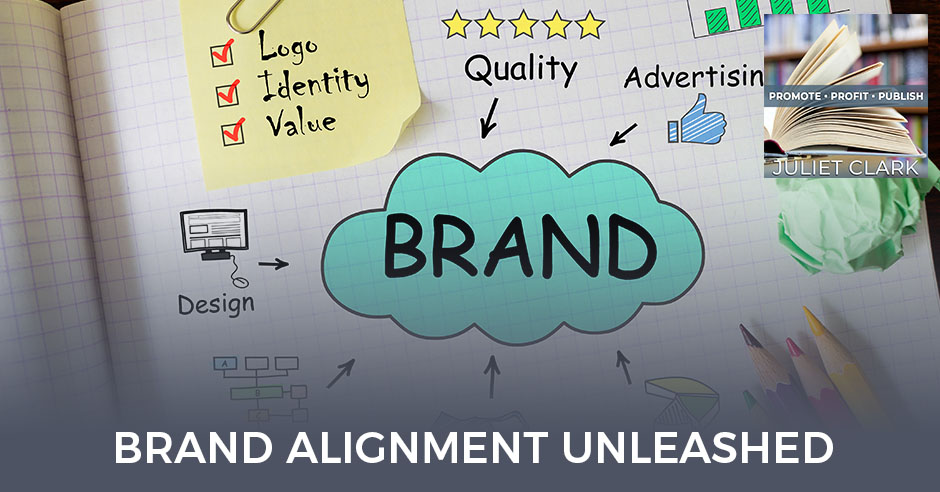
Brand alignment is critical for a business’s reputation and overall image. In this episode, Juliet Clark speaks with Amber Swenor to discuss the value of establishing and sticking with your brand. Amber is the author of Unleashed: A Been-There, Rocked-That Guide to Radical Authenticity in Life and Business; and the Founder and Brand Strategist of Soul Seed Strategy, a marketing firm that partners with small-medium businesses as their outsourced marketing departments. She shares valuable insight on the benefits of identifying your ideal client and not being afraid of saying no when a project isn’t in alignment with your values. Tune in to learn how narrowing your target can actually amplify your brand.
—
Watch the episode here
Listen to the podcast here
Brand Alignment Unleashed With Amber Swenor
We have an awesome guest who is going to talk about branding. Before we get started, I want to remind you to go over to YouTube if you’re someone who likes to watch these over on video. You can find us over there at Superbrand Publishing and subscribe. Don’t forget to get your copy delivered into your inbox every month for Breakthrough Author Magazine.
You can subscribe to that at www.BreakthroughAuthorMagazine.com, or you can read individual articles from the magazine over on LinkedIn. You can follow us over on @SuperbrandPublishing.We have a newsletter over there. We publish every day, tips, tricks, something, and interviews. There’s something for every author every day over there.
Our guest is Amber Swenor. She is the author of Unleashed: A Been-There, Rocked-That Guide to Radical Authenticity in Life and Business. She’s also the Founder and Brand Strategist at Soul Seed Strategy, a marketing firm that partners with small to medium businesses as their outsource marketing departments. After working in marketing and sales for years, she started an award-winning brand strategy and marketing firm in 2015 as a solopreneur and grew the business to a team of nine and more than $1 million in revenue in less than three years.
As a musician, it was important for her to grow a business that would work for her lifestyle. She helps badass entrepreneurs to create the same. As a first-generation high school and college graduate, Amber has had her share of money stories, limiting beliefs, and bad decisions, all of which in form and power how she holds space for leaders to walk their transformational journey. That voice that pops up that makes you question your big, bold ideas never totally goes away. Over time, your empowered voice can become stronger. It’s her mission to help heart-centered leaders rise up into their authority and claim the vision that they have for themselves and their communities.
—
Welcome, Amber. It’s great to have you here.
I’m happy to see you again.
Your book made the Wall Street Journal bestseller list. Talk about that.
I’m thrilled about it. I’m a believer in, “We have to trust what our vision is, move forward on it, and get less and less attached to specific achievements.” Also, for me being a brand strategist, I’m looking at how that could be positive for getting my impact and message out there in a bigger way. I did set that as a goal. It was months of preparing, but I’m ecstatic and grateful for who the book is reaching.
I’m happy for you. I love that conversation we had because I’m going to call my author that we’re headed for there right after this and give her the stats on it because we thought it was much more. She’s going to be happy because she’s stressed out. You were probably stressed out, too.
It’s like anything in life. This is my analogy. You have to keep nurturing the seed before you see a bloom. You don’t know what’s going to bloom, but you have to keep nurturing the seed and then be proud no matter what the outcome is.
For you guys out there who are building an author platform, this is why we start so much in advance. You just don’t plant that seed and the next day, it pops up and you’ve got fruit or it blooms. It takes time to build all that. We talked about that. Lastly, it’s stress. You were a little bit stressed, so you can have it all built and still be stressed out because there’s just so much to bring together. If you’ve been working on it the entire year, you’ll be in good shape.
Here’s what I loved about your bio, “I am the first in my family to graduate, not from high school, but college. College was a real experience for me being that first person because I wasn’t raised in a way that prepared me for meeting all these amazing people. A lot of the things that happen in college are not your education. It’s the education of socialization that happens.” Talk about that a little because I loved that you were transparent about that maybe not good enough thing never goes away.
I primarily grew up in a rural Wisconsin community where I craved being around more diversity of people. Our capital city was three hours away. Whenever we would get to go there, maybe once a year, every three years for a school trip, state forensics, or band competition, I would feel the energy and feel so alive. I would look up the window at the college apartments.
I would crave to be there and walk on State Street in Madison, Wisconsin, where there are cool diversity shops. As the bus would turn and take us home, I remember this depression and sinking feeling. There’s a lot about my childhood and community that I love. I had a lot of great friends but it was a big transition going off to school.
At that time, there weren’t social media. We weren’t even texting or being able to stay in frequent contact. When I left to go to college, it was one of the first times I had driven myself to a town with stop-and-go lights. This wasn’t all that long ago. This wasn’t ancient history time. It’s just that when you’re living in a much more rural area, life can be vastly different from what a city is like. I was intelligent, hard-working, and a valedictorian in my class, but I was meeting people who were talking about their high school, college prep school, and where their parents paid more for them to go to that school than what my family earned an entire year.
All of that comes to the surface. I worked a lot through college to make my rent and food every month. That was difficult because I felt like I was missing out on so much of all these peers that were living in the dorms. This felt like they were getting a full experience and I kept feeling like I kept missing out in life. “Am I ever going to get to a point where I finally get to get what other people get to experience?” There were those thoughts.
I grew up in a more rural part of California and going to school was overwhelming for me at times because of the same thing. These kids had come from the Bay Area, all my roommates were from the Bay Area, and I’d go to visit them. I grew up in a blue-collar 1,200-square-foot house with one bathroom. They lived in these pretty much mansions to me.
It was wild to open up my world and see what was out there. From college going into advertising, suddenly, I’m dumped in New York City. When you’re from a small town, New York City is wild. I love that you share that. There is always that feeling for me when I walk into new situations. It’s like, “Do I belong here?” You don’t feel like you belong and you have to get over that because other people feel that you feel that way as well.
It's not just what we're saying and doing, but it's the authenticity of the energy behind it. Share on XIn my work, I found that no matter someone’s background, a lot of people in some way have that story running where it’s all the same in that way.
One of the things that I learned is as kids from those big fancy homes sometimes didn’t get a whole lot of attention. They have those same things going on. You never know what’s behind somebody’s story and behavior. I want to jump into brand alignment because you’re someone who has a business, a book, and are a little rock star. Music is your world. I would love to talk about how to keep all that in alignment. I don’t know that my authors understand that if one of those pieces is out of alignment, people feel it and it engenders distrust.
It is looking for the threads of your values and what is true, the threads of truth. Here’s the thing. This is my perspective. You can build a business, give this business vision in life, and it can be a thing that sits out here. All of our businesses are still here to serve a service, a purpose to help people. There are a growing number of us who are also recognizing that it feels important that we are able to be fully authentic in the vision we give that business and how we lead that business. I’m one of those people.
In my journey, I started as a marketing brand agency, but even the visuals and how I was communicating were very much focused strictly on the customer needs. I was smart like that. I was like, “I build the brand to what the audience needs.” Part of my personal journey was feeling that I was still having to be different identities. I was trying to build toward what the market needed and wanted. I was not giving enough flow, vision, and power to who I am authentically and what I desire.
Through my journey, I made that transformation to look at, “How do I build the business that starts with who I authentically desire?” The business is still separate from me. However, if I’m building a business so that I can feel in greater flow and be in alignment, then it’s important to start with, “What do I truly desire? What are my values and how do I create this business to allow that to happen?” To me, that’s alignment. The business can have its own identity, but it’s flowing from me. I’m giving the vision.
That goes into who you serve as well. A lot of times, we attract those people that are like us. For me, my authors are action people and I’m an action person. If you’re hiding behind, “I want to work with everybody. I’m a nurturer,” or something you’re not, that’s going to be reflected in how you show up for these people. Do you agree with that?
There’s the energy behind our brands. To me, that’s the most important piece, but also the one that sometimes is most difficult for people to wrap their selves around. It’s not just what we’re saying and doing, but it’s the authenticity of the energy behind it. If you’re showing up and saying a thing to try to get someone to buy a thing, it feels inauthentic. That’s that intangible that people say sometimes they get a feeling. “I have a feeling I should work with you. I can feel that I can trust you.”
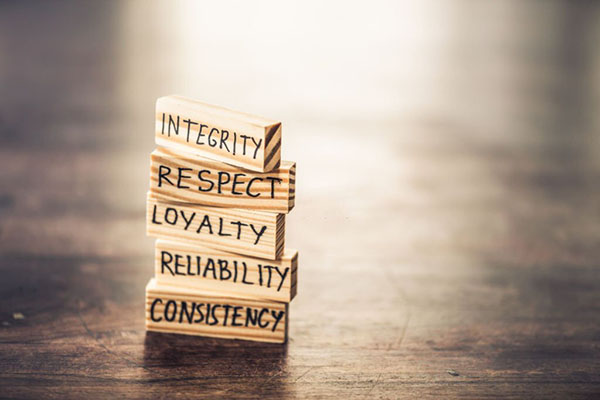
Brand Alignment: It is looking for the threads of your values and the threads of truth.
That feeling comes from first knowing ourselves so that we can be honest and authentic about, “Here’s what brings me joy. Here’s what my service is for and who I’m most aligned with.” We’ve all probably experienced that when there’s an alignment, we can do better for our customers versus if we feel like we’re in constant resistance.
You don’t have to have all the same beliefs, but you need to be aligned in some shape or form. We get to each define what that alignment looks like in our businesses. One of those tools is, “Define the values are the guiding principles and make that known. This is what we believe and this is how we do business.” If you’re on board with that, amazing, we’re probably a good fit.
That’s what we do when we’re selling, but that took practice for me. I had a caricature on my wall that I had. I was down at Venice Beach and I had them build my Cathy avatar. I remember I would be on a sales call and I used to tick through my head, “Does this person meet these criteria?” I got to the point where I finally would say, “I’m not sure this is going to be a great fit. Can I refer you to someone else?” That’s when things started happening. I made that conscious effort to tick through, “Is this person right for me?”
Doing right by them could come back to benefit you in some other way of a referral, but you’re creating a space, so you can work with the best aligned. If the energy flows so much easier, it gives us more capacity to do more. Sometimes you can be resistant and give all your energy and time to one project or one client that’s not working.
For me being that action person, I also find if it’s not in alignment that I’m trying to force something, which frustrates me and makes me not available the way I should be for my other clients because I’m busy trying to make something happen that I’m getting resistance with.
To answer the question we’re diving into, it’s that right there that I invite people as recognize where the resistance is and get to the root of that. Is it something that’s ready to shift within you? Is it something that needs to be clarified in the scope? Is it just not the right fit? Have you outgrown each other? It’s recognizing the resistance point and that’s a great opportunity.
Also, if it keeps happening to you, I always start evaluating when it’s like, “This happened three times in one month. Am I not communicating? How can I communicate this better?” You have to be open to that self-analysis without burning yourself down or being hard on yourself and be able to shift and say, “I’m going to try this next time because I feel like something there didn’t jive.” You’ve been an author. How did you create all of this alignment? You mentioned your values went into your business and then into your book. Was that using the voice in your book? How did you translate that into your book?
The more you narrow, the wider your message goes. Share on XThere have been threads. It’s difficult to pinpoint a thing because, for me, it goes back to a number of years ago of recognizing when there were blocks in the business. It was recognizing what blocks were within me that was causing that to happen. I truly believe if you want to uncover all your limiting beliefs and growth opportunities, go start a business. I said earlier how our businesses have their own identity, but at the same time, we can be a brand.
I am a brand. I’m finally embracing that and saying, “I have a business out here. It’s a marketing agency and supported by the team but I also am my own brand. What are the things that I weave that are true, that I give this business vision over here, but I’m still a brand? How do I keep moving forward in what I believe in and what my work is to do in the world and allow that to come through in the book?”
There was resistance. I worked on this book for years until it was finally ready to reach new levels of self-trust and confidence. I kept coming up against wanting to be fully authentic and real, but then there was still some old programming like, “Does this fit the business that I have? What are those people going to think?” I had to make the decision that I’m writing this book to be my fullest expression.
There are people who will choose to work with me because they want to work with me. There are people who will choose to come work with this business because of the brand identity that I built with the business. I don’t have to have it all figured out about whether what happens with my business is someday, but what I do know is how I help people and the transformation I provide. I need to do that in the book.
You have to come to that mindset first that you’re not going to please everybody. That’s the biggest thing that authors have. They want to help and make an impact, so the book is for everyone. I use this as a great example. Someone brought me a happiness book. I was like, “Who’s it for?” “Everybody wants to be happy.” “Everybody does not want to be happy. There are people that are very unhappy and that unhappiness is serving them in some way.” You need to dive into, “Who are those people I can make an impact by just being me and being out there?” That’s that part that engenders the trust that you were talking about, “It seems like we were meant to be. Let’s work together.”
The more you narrow, the wider your message goes. I was grateful to get support and resources myself on the journey with the mentors and people who helped me stay in my self-trust. I have validated this over years of working with hundreds of clients. I had to keep leaning into it. I’m a fan of going back to basics which are, “Interview your customers. Capture what are the things where they started the process, where they ended, and what did they say through the journey?” It started to hit me over the face of like, “This is the profile of my ideal audience. Out of these 100 people, 98 of them fit this profile. That’s why I’m writing the book for.” I ultimately pictured one of them and was like, “I’m going to write as if I’m speaking to her because she represents all these people.”
Writing the book as if you’re speaking to that ideal client. You have to know who that ideal client is in advance and validate it. That is the hardest thing for me to get authors to do.

Brand Alignment: When there’s an alignment, we can do better for our customers versus if we feel like we’re in constant resistance.
I work with a lot of business owners and entrepreneurs at different stages. What I noticed is especially for people in the first few years, it can be overwhelming and a lot. People are often frustrated about how sometimes we want things overnight, the next month, or the next year. It is a journey. I’m a believer in, “We don’t need to keep ourselves in pain. If you want to hit a goal tomorrow, amazing.” The reality is most people who have built something successfully have taken years and time. We learn by doing. You have to be in there doing the work because through that, we learn about who the right client is and about ourselves. We can’t see the seed bloom if we don’t nurture the seed.
I especially saw that during COVID when March 17, 2020 hit and everybody was online. We would have people call us and say, “I need to be up to six figures in about six months. I need to have this whole lot.” We would be like, “It takes people years to do this.” You just don’t bring it together all at once. It was shocking because there are so many of those coaches, authors, and speakers out there who will say, “This was my journey. It was quick and I can help you make it quick,” but it isn’t for most people. I would even question those people who say they did it quickly. “Did they?”
There are so many factors like, “What’s the actual profitability? What backing did they have when they started?” You can generate $100,000 but easily have it all back in your business and you paid yourself nothing.
There was a guy on Facebook who used to reach out to me and say, “I have this 90-day program that you’ll make $100,000.” I say to him, “Can I talk to some of your happy clients?” He would go away and come back six months later with his new 90-day program to get $100,000. I would say, “Let me talk to some of those clients.” They never materialized. Make sure when you do hire someone that you asked to speak to some of those people who have gotten results with it. Tell us a little bit about what you do with entrepreneurs.
My personal zone of genius is helping entrepreneurs get clear on what is true for them and what they do desire, get some level of that vision of what they want to create, and put the strategy behind it to make that happen, to support them in that evolution. One of my real key areas of specialty is business owners who’ve already had a level of success.
They may have built a business, or they’re doing a service, but they’ve reached a plateau where either they want to pivot what the business is, or take that next girl step and not be the only service provider trading dollars for hours. It’s that transformation point around supporting them, but also the business model. This has looked like helping people build a therapy practice, and she wanted to shift into doing life coaching and retreats.
Another had a bakery. We supported her to grow it and sell it. Now, she’s off doing something else. Deepening to where we started this conversation is that alignment of, “What’s true for you? What have you learned about yourself through this? What can you take from this to build on the next thing you’re doing?” A lot of people don’t just want to abandon a thing, especially if it’s making money. I support people in that transition plan of how to evolve and grow forward, but it doesn’t mean that we have to abandon everything that was done before totally.
We can’t see the seed bloom if we don’t nurture the seed. Share on XI can see some of those things I’ve given up before coming back now that the economy is going a different way as well. I stopped those things because I got tired of them.
That’s beautiful. That’s okay to give it up. I sometimes have burned-out business owners who might even have a business generating multiple 6 or 7 figures. They have a staff of 10, 20, or 30, and they’re like, “I’m thinking about shutting it down tomorrow.” I support them through that to get present to what they truly desire. That’s okay if that’s the solution.
Honestly, people come to me because, deep down, that’s not what they want. What they want is to get that thing to work and to pay them some money so they can step away from it. They don’t know how because when you’re in it, you can’t see beyond that. When you’ve only ever been hustling in the thing, it’s hard to step out and work on it without getting that support.
That’s where you need clarity. That’s where I was in 2020. Thank God for COVID because I got out, started golfing, and then took those baby steps. They do have to be baby steps. You can’t just change your business overnight. “This is what I’m going to do. This is who I have to hire. This is how this is going to run so that I can golf three days a week.” You do have to work with someone like yourself who can bring that clarity because it’s like anything. When you’re in the middle of it, you cannot see the forest for the trees. You need that extra set of eyes.
I’ve walked that journey myself through a big transformation, my business model, the business renaming, rebranding, and bringing it all into greater alignment with what fills my cup and allows me to be the best leader. The client says who is the best fit. They resonate with that. They’re like, “You are walking the walk.” That’s amazing. A few years ago, I had that story running like, “They take me seriously in business as a brand strategist if they see me rebranding again.” It was like, “Absolutely, because those are the clients that I support are the ones who feel that they’re meant for a rebrand as well.”
What people don’t understand is that your initial branding effort probably is not going to last because as a business owner, you’re evolving as a human being. Your ideas, business, leadership, and everything is evolving. A rebrand every couple of years makes a lot of sense. I would be scared if I didn’t see a rebrand every couple of years. I would wonder if there’s something static going on, no growth. They would think you’re credible.
I’m highlighting those things stories we can tell ourselves that can prevent us sometimes from stepping into alignment.

Brand Alignment: When you’ve only ever kind of been hustling in the thing, it’s hard to step out and work on it without getting that support.
That’s true for new business people, especially authors. I noticed that authors would initially hide behind a corporate brand because they’re not out there. They’re not visible. That hiding is a little bit about how they’re showing up in the world. As they begin to gain that confidence and realize that they are the face of their business, you’ll see them start to rebrand and peek out from behind that corporate brand a little bit more. I did it myself. It seems like you did a little bit, too, sitting down and figuring out who you are, and now you’re showing up. Amber, where can we find out more about you if we want to work with you?
Soul-Seed.com. We have an exciting Unleashed Live in the fall of 2022, which isn’t an event to support this conversation around people who are feeling a rebrand of a version of transformation. You can find all that on the website.
There are tickets over there. Is it online or in-person?
It’s online.
These days, we don’t know. Some people are going out live and some are online. I prefer this new online presence because we don’t have to rent a hotel. We don’t have to do all those things that we used to have to do before that for events.
I like both. With my book, I’m thrilled about the global reach that I was like, “This makes sense that I want to do a global event, keep it accessible price point, global and virtual, then sometimes I do in person as well.” We each get to choose what works for our audience.
I got a little bit lazy. I do not have much desire to get on a plane and sit in a hotel for days. Now that I’ve got to do this all from home.
It’s a big commitment.
Thank you so much for sharing with us.
Thank you.
Important Links
- Superbrand Publishing – YouTube
- www.BreakthroughAuthorMagazine.com
- @SuperbrandPublishing – LinkedIn
- Unleashed: A Been-There, Rocked-That Guide to Radical Authenticity in Life and Business
- Soul Seed Strategy
- Soul-Seed.com
About Amber Swenor
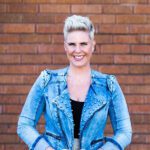 Amber Swenor is the author of Unleashed: A Been-There, Rocked-That Guide to Radical Authenticity in Life and Business; and the Founder and Brand Strategist of Soul Seed Strategy, a marketing firm that partners with small-medium businesses as their outsourced marketing departments. After working in marketing and sales for years, she started an award-winning brand strategy and marketing firm in 2015 as a solopreneur and grew the business to a team of nine and $1M+ revenue, in less than three years.
Amber Swenor is the author of Unleashed: A Been-There, Rocked-That Guide to Radical Authenticity in Life and Business; and the Founder and Brand Strategist of Soul Seed Strategy, a marketing firm that partners with small-medium businesses as their outsourced marketing departments. After working in marketing and sales for years, she started an award-winning brand strategy and marketing firm in 2015 as a solopreneur and grew the business to a team of nine and $1M+ revenue, in less than three years.
As a musician, it was important for her to grow a business that would work for her lifestyle and today, she helps badass entrepreneurs to create the same! As a first generation high-school and college graduate, Amber has had her share of money stories, limiting beliefs and bad decisions, all of which inform and empower how she holds the space for leaders to walk their transformation journey. And oh, that voice that pops up that makes you question your big bold ideas? That never totally goes away, but overtime, your empowered voice will become stronger! It’s her mission to help heart-centered leaders rise up into their authority and claim the vision that they have for themself and for the communities they impact!

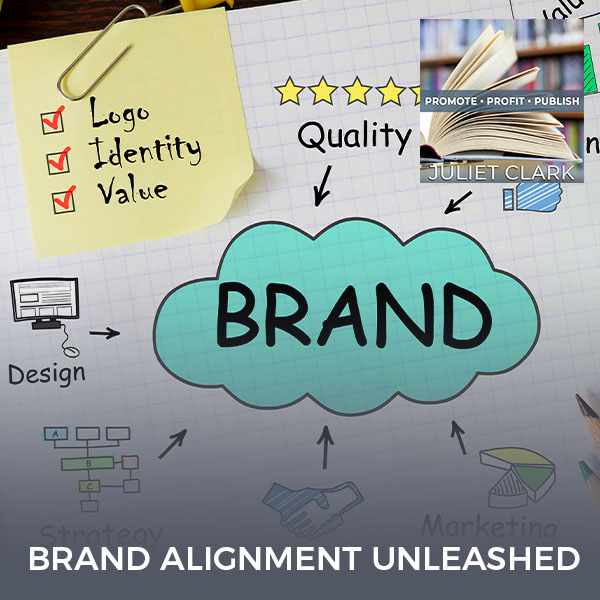




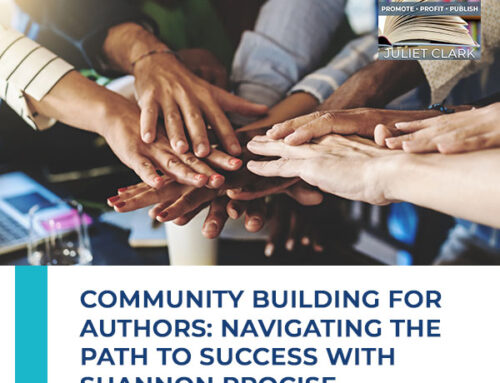
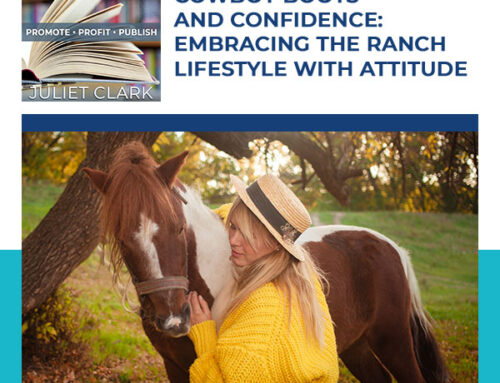


Leave A Comment